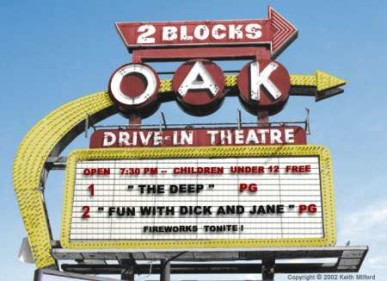
(The Oak Drive-In Theater sign on Woodward, just two blocks away on Normandy Street in Royal Oak with the dancing hot dogs on the screen at intermission and the playground for the kids under the screen until it got dark enough to start the movie! Photo Keith Milford).
I got lost this morning- sorry. I ran across something I wrote a long time ago about a (personally) interesting trip to the Oak Drive-In during which something improbable happened in the red VW Beetle. That was the significant drawback to the German car, which in most other respects was an admirable bit of transportation.
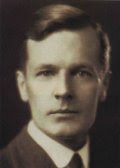
(Nash Motor’s Nils Eric Wahlburg in the 1930s)
There was something much cooler for the Drive in- and it was the product of the American Motors Corporation, and one of the most unsung innovators in Detroit iron. Nils Eric Wahlberg had many inventions to his credit- the fully-unitized/monocoque body construction, a manufacturing process still in use today (the 1940 Nash 600), the “Weather-Eye” integrated automotive heating and ventilation system (also in the1940 Nash) and the seatbelt and padded dash being just a few of them.
My favorite though has left a legacy on at least two generations. Invented in 1936 to accommodate the needs of traveling salesmen, campers and a Depression-era America on the move, Charlie Nash introduced the “Bed-In-A-Car” feature.
This revolutionary innovation allowed the vehicle’s interior to be converted into a sleeping compartment. The rear seatback hinged up, allowing the rear seat cushion to be propped up into a level position. This also created an opening between the passenger compartment and the trunk. Two adults could sleep in the car, with legs and feet in the trunk, and heads and shoulders on the rear seat cushions.
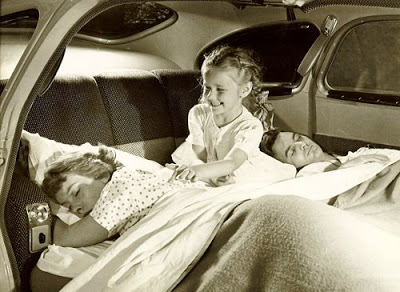
In 1949, possibly to accommodate the Greatest Generation that was creating Boomers out of whole cloth, so to speak, the arrangement was modified so that the front seats fully reclined, creating a sleeping compartment completely within the Rambler’s passenger space.
In the 1949 Nash Airflyte, these reclining seatbacks were given the ability to lock into several intermediate positions, which George Mason dubbed the “Airliner Reclining Seats.”
They were also known as other things, but they were perfect for another innovation of the time that really took off after the war: The Drive-In Theatre.
Richard Hollingshead was a young sales manager at his father’s Whiz Auto Products, whose mother, it is said, was a woman of some substance. In fact, she was substantial enough that she had difficulty in fitting into a seat at the walk-in movie theater.
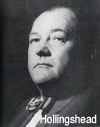
(Richard Hollingshead, King of the Drive-In Theater).
Hollingshead combined his love of cars with that of the silver screen. His idea was to create an open-air movie theater where moviegoers could watch from the safety and comfort of their own automobiles where they could smoke, drink, babysit and generally behave as they wished. He experimented in his own driveway in Camden, New Jersey, until he got it right.
He put his mother in the passenger seat and mounted a 1928 Kodak projector on the hood of his car, projected onto a screen he had nailed to trees in his backyard, and used a radio playing behind the screen for sound.
Hollingshead subjected his configuration to rigorous testing. To simulate inclement conditions, he used a lawn sprinkler. With innovative ramps he created the perfect parking topology for unobstructed views and created the drive-in movie theater experience.
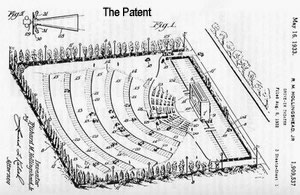
He was awarded United States Patent #1,909,537) on May 16, 1933, and with the backing of some fellow visionaries, put together $30,000 to break ground. Hollingshead opened the first drive-in on Tuesday June 6, 1933, on Crescent Boulevard in Camden. The price of admission was 25 cents for the car and 25 cents per person, and the first carload of kids hiding in the trunk followed in short order.
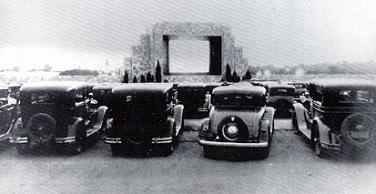
(The very first American Drive-In Theater in Camden, NJ)
The design did not include the in-car speaker system we knew in the 1950s and sixties, before the theaters began to broadcast on their own low-power AM and FM transmitters direct to the radios in the cars. RCA Victor agreed to provide “Directional Sound” from three main speakers mounted next to the screen. The quality sucked, particularly for those who parked in the rear of the lot for reasons best known to themselves.
Eventually the iconic metal speakers connected to poles by curly cables in each parking place became the industry standard, and there are few teenage drivers who did not have to explain to Dad how the car got damaged by driving off with them still hooked on the driver’s side window.
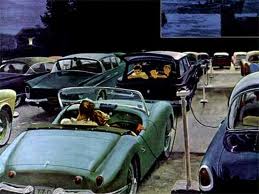
(Saturday Evening Post version of the American Drive-In).
The theaters were large and small; the largest was the All-Weather Drive-In of Copiague, New York, with space for 2,500 cars, indoor seating for 1,200, a playground, full service restaurant and a shuttle train that took customers from their cars and around the 28-acre theater lot.
Ed Brown’s Drive-In & Fly-In of Asbury Park, New Jersey, had the capacity for 500 cars and 25 airplanes. The Oak had a respectable 1,000-car capacity, and a cool snack bar, if you had not brought your own popcorn, as Raven and Big Mama did when they took their three tykes to the show. Sometimes there were fireworks after the movies were done.
Sometimes the kids were still awake for it, and I can remember being carried into the house from the 1948 Ford.
In their heyday, in the late 1960s, fully 25% of all American movie screens were in Drive-Ins; that plummeted in the great decline to less than 2% by 2013.
Several explanations have been offered for the decline; the rise of the VCR and DVD, along with 500 cable channels at home. To try to buck the trend, some theaters abandoned the family entertainment model and went porn, which pitted operators against local blue-noses. Many were just overcome by urban sprawl and no longer made sense as real estate.
The OAK went bust with the last show in the dark on October 30th, 1980, showing “Caddyshack” and “Up the Academy.”
It was a sad evening. The Oak turned into an industrial park. As it turned out, the Rambler’s folding seats outlasted most of the Drive-Ins, but there is a spirited movement to retain the 350-odd theaters that remain, and some guerilla capitalists are even opening a few new ones.
I mean, there are things you can do in your car that are even more exciting than just watching the show, you know?
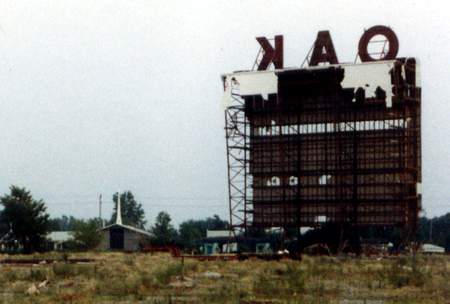
(The Oak Drive-In during demolition. Photo Greg O’Sullivan).
Copyright 2014 Vic Socotra
www.vicsocotra.com
Twitter: @jayare303
